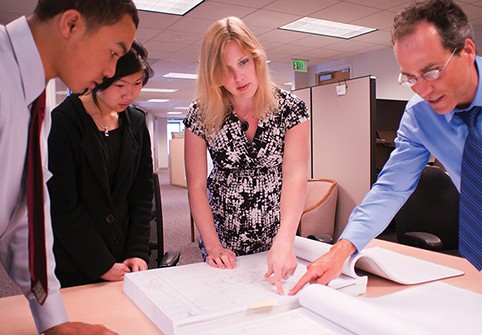Could States Create Design Competitions in a New Era of ESSA? Getting Started with Next Generation Accountability

This blog was originally published on iNACOL.org.
There was an interesting announcement from the Fordham Foundation to launch a design competition for Next Generation Accountability models.
The Fordham competition made me think – what if states launched their own “Next-Gen Accountability” design competitions? Ask local districts, school leaders, educators, community activists, parents and even students to engage in a design for next generation accountability. The potential of incentives such as prizes to drive broader conversations around new accountability models is real. Targeted incentives could mobilize community members, unlikely allies, new talent and resources to improve systemic accountability.
I think the first question that is critical in the design challenge is to engage in a community conversation to describe “what success looks like” for students. What does a meaningful high school diploma look like? How do we define college ready, career ready and can a student enter the workforce and earn a livable wage job? How do we reverse engineer from there?
It could be an interesting approach for outreach for states to launch design competitions for next generation accountability models for K-12 school systems in their own states. What would happen if states were able to engage local communities, workforce leaders and local education agencies – partnering in local communities as well as bridging conversations to support educators to develop their own new models to present as new designs for ensuring quality, accountability and equity?
In truth, there needs to be design competitions underway immediately. The Every Student Succeeds Act (ESSA) is ushering in a new era in American education. The responsibility for designing next generation models of accountability is shifting to states and to local education agencies. This is an opportunity to challenge our communities, our local education systems and our states to plan, design and implement forward-thinking new models of accountability that are data-rich and provide powerful, personalized learning experiences that are relevant, challenging and offer deeper learning opportunities.
It starts by engaging local communities in a conversation around, “What does success look like?” Then, local leaders working together to define what accountability would look like at the school level, district level, and state level. What are the indicators of success that would drive breakthrough learning models for students and support doing what is right for students, educators and communities?
Most of the elements in Fordham’s challenge are well grounded in school accountability as measured by grade-level student proficiency on academic standards, which are foundational to ensuring equity and a level playing field, as I describe in this report and in this blog. But could we ask what information would truly exhibit what students know and are able to do to be gainfully employed and college and career ready, such as a proficiency-based diploma? Having students with e-portfolios and exhibitions demonstrating mastery through a performance, through a community exhibition, gaining skills through internships, projects, problem-solving in their communities and meaningful work for deeper learning to ensure future success – that is a brighter and more robust outcome for our kids and our society. What should success look like?
Anthony Monfiletto suggests redefining success in his work at ACE Leadership bridging K-12 education, community and workforce in Albuquerque, New Mexico.
The bottom line – we need to shift the conversation in our communities, local education systems and states to reflect deeply on and express the outcomes we hope to see when answering the fundamental question, “What should success look like for students?”
Then, engage in a design competition asking, “What then, should next generation accountability look like for aligning across systems and ensuring every student’s success?”
Paul Leather from the State Department of Education in New Hampshire recommends these action steps for designing Next Generation Accountability:
- Decisions about assessments and even accountability measures should be done in partnership with local educators and communities, with the state providing technical support.
- Readiness to partner matters, and state education policymakers should assess and support the state agency and local agencies’ readiness to engage.
Now is the time for states to design competitions for local communities and local systems to map the future of accountability in support of innovation for equity. Driving breakthrough models that will incent the innovative education systems our students need today to be globally competitive.
For more from iNACOL, check out:
- Four Ways States Can Promote Quality in Blended and Online Learning
- Nine Ways States Can Create Competency-Based Education Systems
- Eight Ways Federal Policymakers Can Support Student-Centered Learning
Stay in-the-know with all things EdTech and innovations in learning by signing up to receive the weekly Smart Update. This post includes mentions of a Getting Smart partner. For a full list of partners, affiliate organizations and all other disclosures please see our Partner page.


0 Comments
Leave a Comment
Your email address will not be published. All fields are required.